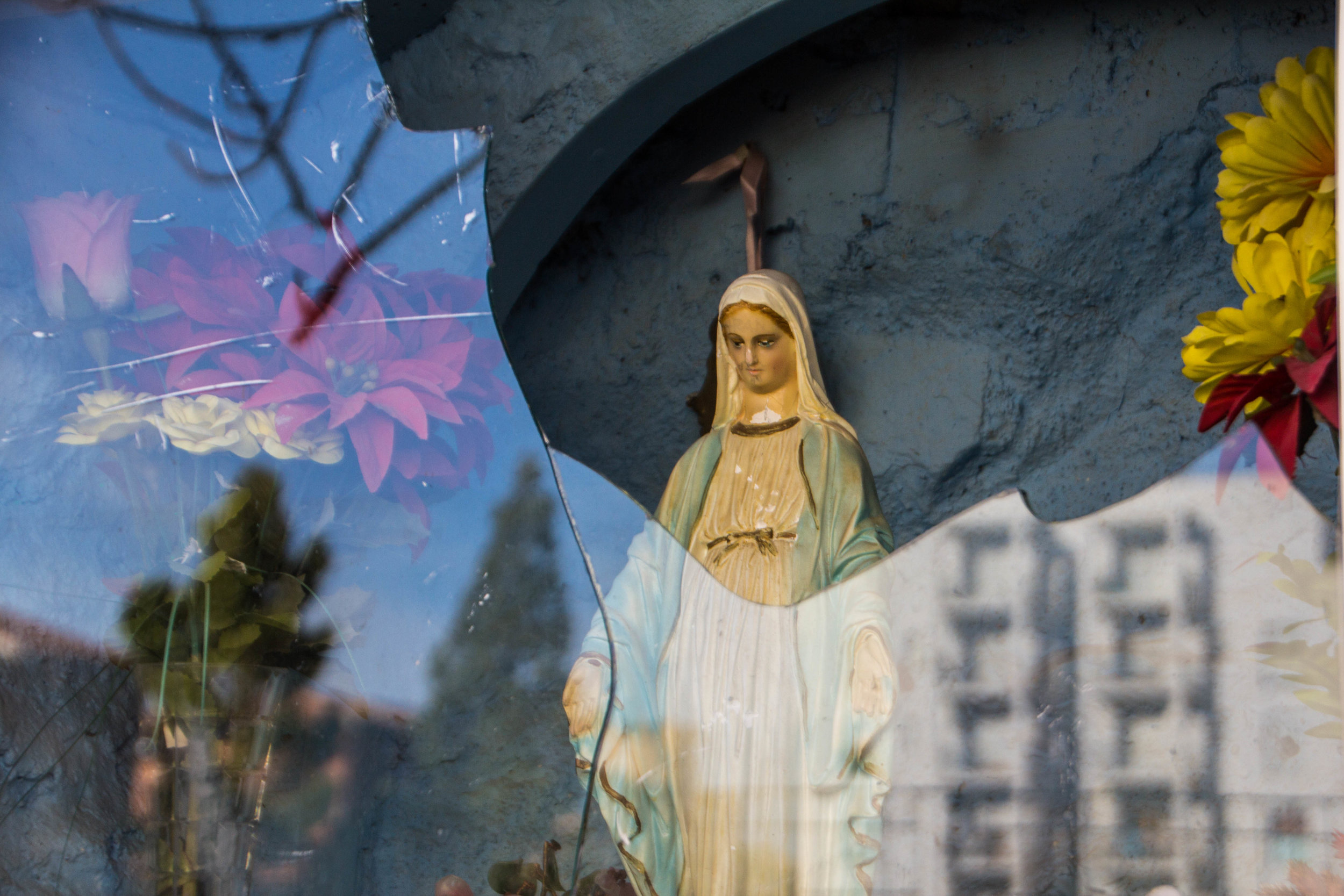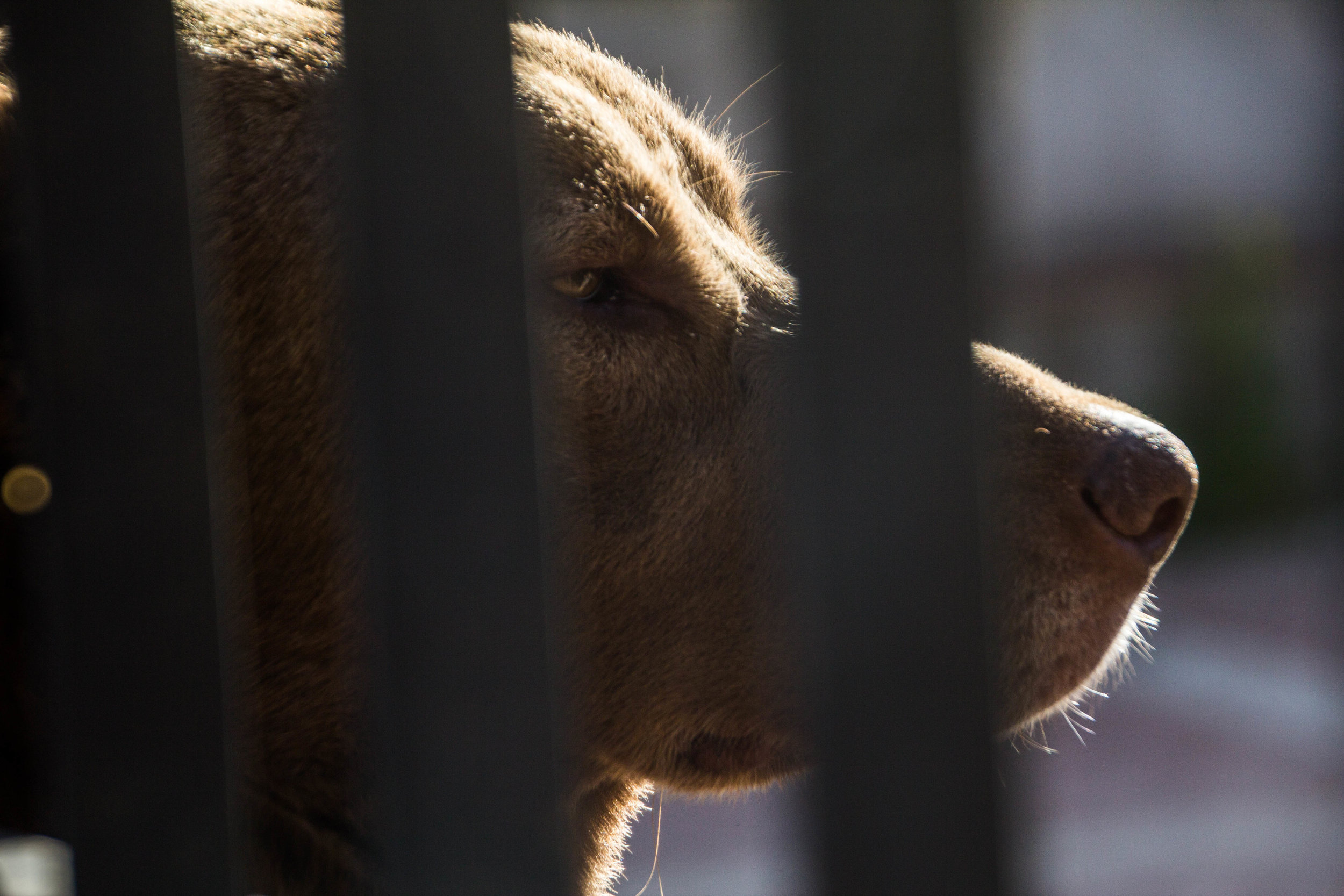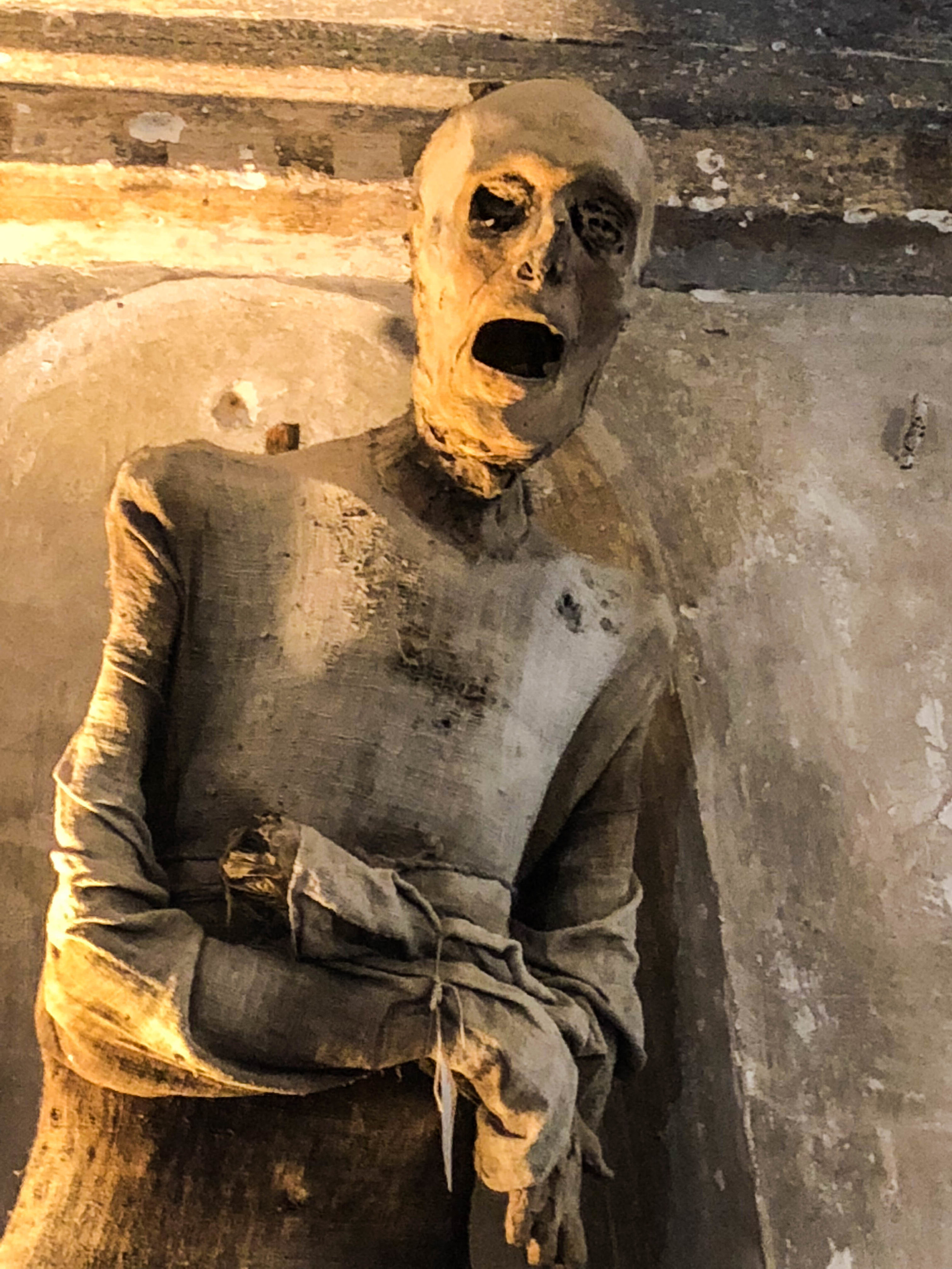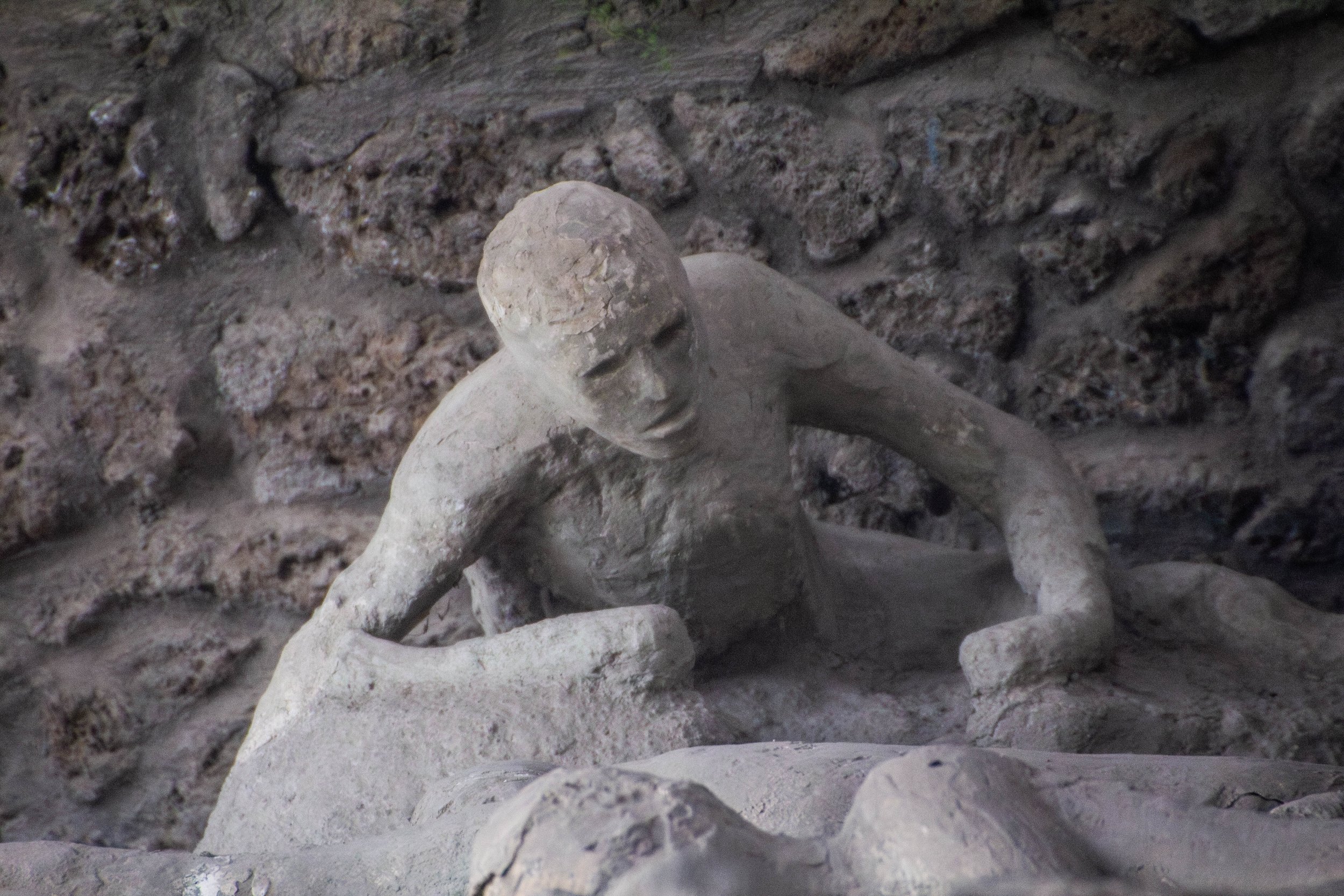NIGHTMARE!
Seriously, nothing can prepare you for how creepy this place is... but I'm getting ahead of myself.
I'll start from the beginning. The Capuchin Catacombs are always placed highly on people's lists of things to do and see in Palermo, and it's easy to see why. It's just SO outrageous! I'll get into all the details of what exactly this place is in a moment, but first, here's a map of where it is in Palermo. It's definitely a good distance away from the city center, so you'll want to come here via car. Out here you are officially in the "Sack of Palermo" zone, which isn't pretty, but that's beside the point. Entry into this place costs 6.00 EUR (7.19 USD). Plan accordingly.
Okay, so before we dive into this article, I've got some serious explaining to do, because you are sure to have questions. I know that for me, the biggest question I had in all of this was just "why." Why does this place exist?
A quick history of The Capuchin Monks
The official name of the Capuchin monks is "Order of Friars Minor Capuchin;" they are a major order within the Catholic church, and one of the most notable offshoots of the Franciscan Order. The Capuchin Order was officially founded in 1520 when a Franciscan friar named Matteo da Bascio claimed that he had received a vision from God, indicating that the Franciscan Order was living in a way *other* than what that their founder, St. Francis of Assisi, had intended. He founded the Capuchin Order in an effort to return to the solitude and penance that had been practiced by monks in the past.
Naturally, the church sought to suppress these changes, so Matteo and his companions had to flee. They would eventually find refuge with the Camaldolese monks, adopting as their official garb cloaks with hoods, as was customary of hermits in that region of Italy. Eventually, in 1528, the Pope gave Matteo his blessing to move forward with this new order of monks, and so the rules of the order were officially drawn up. The life of a Capuchin monk was to be one of extreme poverty. Observant monks were allowed no possessions, nor were they allowed even to touch money. Instead, they would get what they needed to survive through begging. However, not long after its official founding, the Capuchin Order hit a few speed bumps when 2 of its founders left, including Matteo himself. There was a time when the future of this order was uncertain, but ultimately, they overcame, and the Capuchin Order was accepted into mainstream Catholicism.
Okay, Whatever Peter—Just Tell Me About The Catacombs
Alright asshole, I was getting there... So let's fast forward a little bit and jump over to Palermo—it was late in the 16th century and the the Sicilian chapter of the Capuchin Order had run out of space in their graveyard. To make better use of the space they had at their disposal, they decided to build catacombs instead. Once the subterranean chamber had been completed, bodies of dead friars began to pile up down there. Before being laid to rest, they were drained of their fluids, washed with vinegar, and (when necessary) stuffed straw to help them maintain their shape. From there, they were dressed in their normal friar's robes and laid on clay shelves.
Originally, these catacombs were intended only for the deceased member of the Capuchin Order, but as time went on, it became a morbid symbol of status to be buried here. People of prominence who intended to be entombed within the Capuchin Catacombs would write sections in their will explaining how they wished to be dressed, sometimes even specifying the frequency with which their clothes were to be changed.
By the 1800s, the catacombs ran on donations from relatives of the deceased. Continued donations would ensure that the deceased remained in a favorable position within the catacombs. If the flow of donations ever stopped, the bodies would actually be moved into less favorable parts of the catacombs—tucked away in corners, up on out-of-sight shelves, etc. (Apparently the Capuchin monks were allowed to touch money again at this point).
The last friar to be entombed here was in 1871, but burials of members of the public continued until 1920. Today, the final body count here is about 8,000, plus another 1,252 mummies. The halls of the catacombs are divided into 7 sections: Men, Women, Virgins, Children, Priests, Monks, and Professionals. This site had been an object of public fascination for hundreds of years, so was eventually opened to tourists like me.
Now, there are catacombs all over Europe. Paris, Rome, Lisbon... the list goes on. But the Capuchin Catacombs of Palermo are special because the Capuchins here had a particularly heightened sense of respect and obligation to the dead. If you visit the catacombs of Paris or Rome, all you will see is piles of bones. But here you are going to see the full bodies, on display, as if part of a presentation. To make matters creepier, there was a particular chemical procedure used here to protect the skin of the deceased from the onslaught of bacteria that normally speed up the decomposition process. Couple that with the unusually dry climate of Palermo, and bodies that would have rotted and decomposed within months ended up lasting for hundreds of years. Today most of the bodies are withering away to dust, but there are a few notable exceptions. And even the less-well preserved specimens are likely to have kept some combination of their skin, teeth, and/or hair.
The most famous body down here is that of a 2-year-old girl named Rosalia Lombardo. Though she died in 1920, she looks completely undisturbed by the sands of time. Her face looks as peaceful as the day she died, which has earned her the nick-name "Sleeping Beauty." Her picture is shown here.
Visiting The Capuchin Catacombs
So we arrived at Piazza Cappuccini around 2:00pm to discover that the catacombs are actually closed from 1:00pm to 3:00pm. So we had some time to kill. We were going to leave our car parked in the center of the square when an aging man in a leather jacket approached us, gesturing that we owed him money. To which we responded, "okay but why?" Understanding our question, the man struggled to explain that he was going to look after our car while we were gone. "Looky look!" he repeated over and over. Lucky for him, we had some change in our pockets. It amounted to less than 1 Euro, but it got him out of our face. We would come to understand that nearly every parking lot in Palermo has a self-proclaimed guardian that expects people to pay them a fee to look after their cars. It's kind of like a really stupid, inconsequential microcosm of the way the Mafia makes its money. Local business owners are forced to pay for "protection" (although the rest of us would just called it extortion).
We took a walk around the neighborhood, and it was all pretty ugly. This is an area where the "Sack of Palermo" had hit hard. The streets were dirty and the high-rise apartment buildings that lined every street were not easy on the eyes. Still, even here, the warmth and spirit of Palermo managed to shine through like a plant sprouting through a crack in the concrete. It wasn't much to look at but I kept myself busy taking photos where I could.
We passed a local fruit vendor that struck me as being a potentially good photograph, so I crossed the street in the search of the right angle. Just then, a father and son in a beat-up car slowed to a stop near the fruit vendor. The father hopped out to pick up some groceries and I noticed the kid making faces at my camera through the window of the car. He was motioning at me to take his picture. I smiled and indulged him for quick photoshoot as his puffed his cheeks out and crossed his eyes. At that moment, the father got back into the car, saw what was going on, and immediately joined his son making funny faces in the window. Looking back at these photos always makes smile. Palermo had a sneaky way of making me feel at home.
Eventually we circled back to the catacombs to find that a line had formed in anticipation of their re-opening at 3:00pm. I groaned. I hate lines and I hate feeling like a tourist (even though that's exactly what I am). We waited in the line, and when the doors finally opened, we paid our fee to a off-putting man with a raspy voice and friar's robe. There was a big sign here that said "No Photographs." Yeah right. From there, we began the bone chilling descent into the catacombs. I'm not sure what I was expecting, but the moment we turned a corner and actually saw the bodies in these catacombs, I immediately felt grateful for the other tourists that were down here with us. I would not have been able to do this if I had been alone.
It was deadly silent down here, and there were bodies EVERYWHERE. There were two layers of them minimum, hung on every wall, like a museum. It felt clear that they had been posed for visitors to see. Every walkway and corridor had bodies hanging from every available piece of wall space. This would occasionally give way to shelves stacked floor to ceiling, showcasing bodies laid horizontally with their faces tilted outwards for us to see. These always struck me as particularly creepy because it was like I was seeing a cross-section of a coffin that had been buried long ago.
All of these bodies were dressed in faded clothing and were in varying states of decay. Some of them had withered away to be nothing more than bones, but others of them still had skin, hair, teeth, and even personalities. Although I had no intention of not taking photographs down here, I was a little self-conscious to whip out my big camera and have the sound of my shutter echoing down these silent halls. Instead, I opted to take my iPhone around and snap a few pictures. I was doing my best to be discreet, making sure that there was nobody within sight when I took each photo. Just then, a raspy voice (that I quickly recognized as belonging to the creepy man at the entrance) echoed through the halls telling me not to take any photographs. Alarmed, I looked up and around and noticed an elaborate array of security cameras watching my every move. I was going to have to be more sneaky.
A few minutes later, the voice again broke the silence, reverberating through the halls of corpses, asking us to "respect the dead" and not take any photographs. At this point though, I had noticed other visitors doing the same thing, so it wasn't just me. My tolerance for this level of creepiness was quickly running out, so after about 20 minutes down here, we were speed walking back out the door. And I didn't slow down when I had to walk back past the man who had called us out for taking pictures. There was no way I was deleted those shots. So here are a few of those iPhone pictures that I managed to escape with....
As we drove away from this awful place, I got to thinking—fuck that guy who told us to respect the dead! Who is HE to tell US that we need to be respectful? He's the one who turned these dead bodies into a tourist attraction! Or, you know, his organization. Is that supposed to be respectful? Is that what the dead would have wanted? To be gawked at by millions of tourists for centuries on end? This is a goddamn circus!
EDIT: It’s a few years later and I just watched the Rick Steves episode where he visits these catacombs, and you know who brings the film crew down here for the tour? IT’S THE SAME FUCKING GUY! Bringing a whole goddamn film crew down here feels pretty disrespectful to the dead, right? Yeesh! Anyway, back to our regularly scheduled programming… But my biggest question of all was and still is why. WHY was this allowed to become "a thing." I understand the events that lead us here, but opening this place up to tourists and charging an admission fee feels icky. This place was just so penetratingly creepy that it felt absurd. Like the culmination of some sort of absurdist short story that really went out of its way to be bizarre. But it's real.
And, just, like... why?
P.S. About 3 and a half months after visiting this place, I was back in the U.S., working through writing this series of articles, and I had a dream about this place. In the dream, I went back to visit the catacombs—and this time I was just going take a million photos no matter what anybody told me. Things get fuzzy in the middle of the dream, but at the end of the dream, I was standing in a pile of rubble with an old man who was my guide. It looked like Palermo had sustained some sort of heavy bombing or something because all I could see in the distance was just more smoking rubble. But somehow, amidst all this rubble, the stone coffins containing these bodies had survived.
The old man showed me which of the coffins belonged to the "sleeping girl" so that I could get my photograph. I slid open the lid of the coffin to see her ghastly body. Although she was known for looking very peaceful, her mouth now gaped open, as if she had been shifted in the destruction that had demolished the building around her. Her coffin was also now half filled with dirty water, some of which was pooled in her open mouth. Ugh.
I took my camera out to snap a picture, but as soon as my the shutter closed, her arms reached upwards. And then, abruptly, she sat straight up in the coffin! Spooked, I yelled some kind of profanity and slammed the coffin shut on her head. Fuck that!
And then I woke up.
We'll close with the "Track of the Day," as per usual. I do my best to find songs to pair with these articles that have some sort of thematic significance. In this case, it needed to be sufficiently creepy. So here's a catchy song about death, sin, and getting off on watching somebody dying, which felt pretty relevant. Enjoy!




























